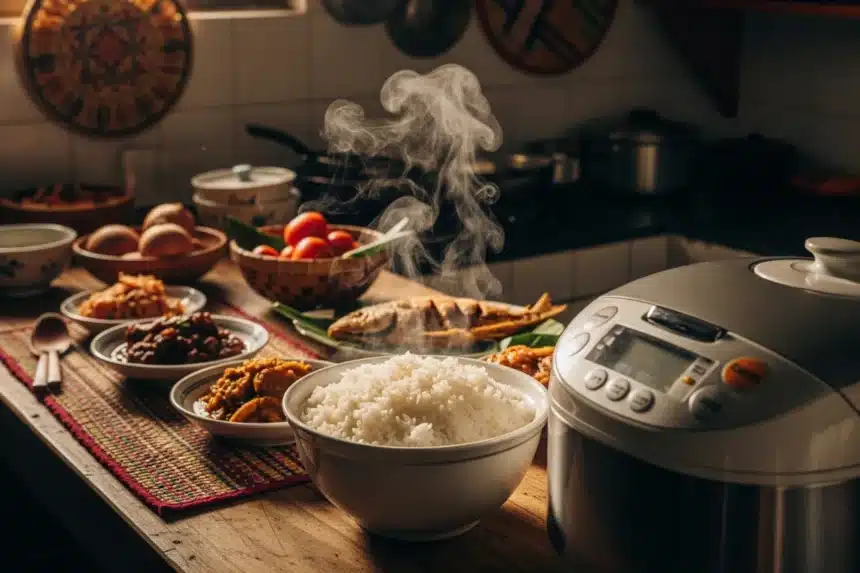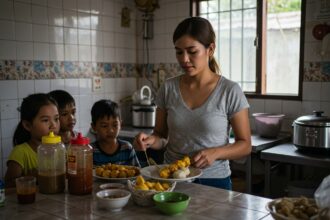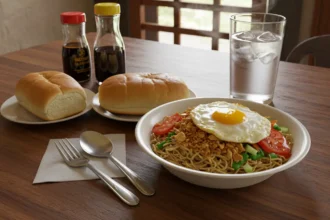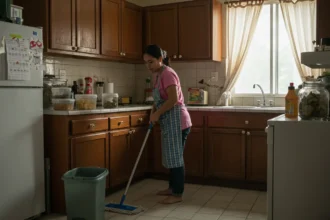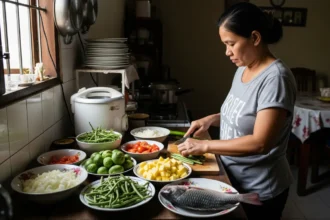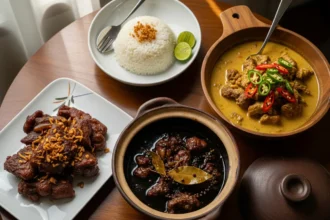Today, I’ll teach you how to How to Cook Rice Perfectly. Rice is the heartbeat of every Filipino meal. Whether you’re eating adobo, sinigang, or a simple fried egg with tuyo, one thing is certain: the rice must be on point. Undercooked rice ruins the whole meal, while soggy, mushy grains leave everyone unsatisfied. Cooking rice may sound like the simplest kitchen task, but ask any Pinoy lola, nanay, or tatay, and they’ll tell you: hindi basta-basta ang pagluluto ng kanin. It’s both a science and an art.
- 🍚 Why Perfect Rice Matters in Pinoy Meals
- 🥢 The Classic “Finger Method”
- 🔌 Rice Cooker vs. Kaldero
- 🛠 Pinoy Hacks for Fluffy, Perfect Rice
- 🌾 Exploring Rice Varieties
- 📏 Water Ratio Guide for Different Rice Varieties
- 🥘 When Rice Goes Wrong
- 💡 Storage and Leftover Hacks
- Frequently Asked Questions about Cooking Rice Perfectly – Pinoy Hacks
- 🍴 The Bigger Picture: Why Perfect Rice Is More Than Cooking
- 🍚 References
For generations, Filipino families have relied on rice cookers, kalderos, and even traditional wood-fired stoves to prepare the perfect pot of rice. Along the way, they developed clever hacks that ensure rice comes out fluffy, fragrant, and just right every single time. These hacks aren’t just about cooking – they’re about preserving tradition, preventing waste, and making sure every meal feels complete.
In this guide, we’ll break down the Pinoy hacks for cooking rice perfectly. We’ll explore the classic “finger method,” the difference between cooking in a rice cooker and a kaldero, and some modern tricks that blend convenience with tradition. And because rice is life, we’ll also look at healthier rice options, storage hacks, and even what to do when rice goes wrong.
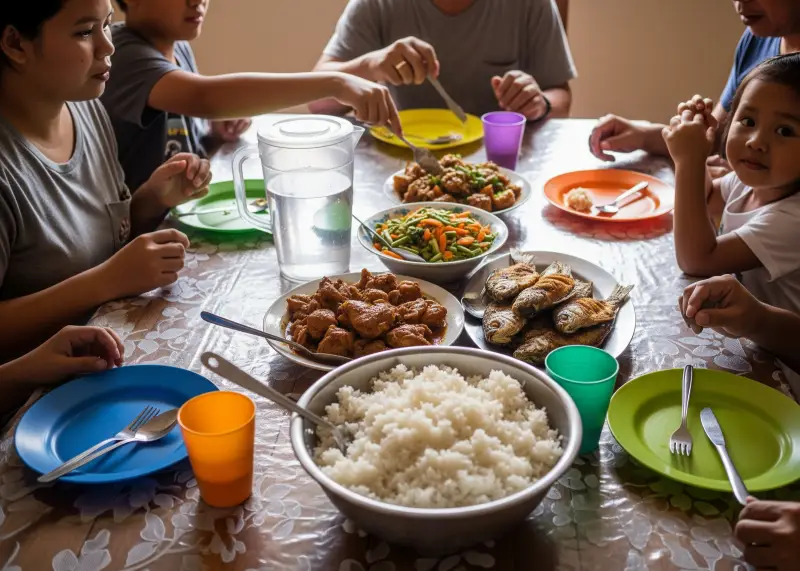
🍚 Why Perfect Rice Matters in Pinoy Meals
Rice isn’t just a side dish in the Philippines; it’s the foundation of the dining table. Without rice, many Filipinos don’t even consider it a proper meal. This is why cooking it right carries so much weight. A perfectly cooked rice binds everything together – it balances salty adobo, complements sour sinigang, and makes simple ulam more filling.
Beyond taste, rice carries emotional value. Many of us grew up with the smell of steaming rice greeting us after school, or with our parents reminding us not to waste even a single butil. Perfect rice isn’t just about fluffiness; it’s about respect for food and family tradition.
In one Quezon City household, for instance, a lola would insist on checking the rice pot every night before serving dinner. If it was too soft or too hard, she’d remind her apo, “Rice should be cooked with love, kasi lahat ng ulam nakasalalay dito.” That gentle lesson stayed with the family, showing how food habits become part of memory.
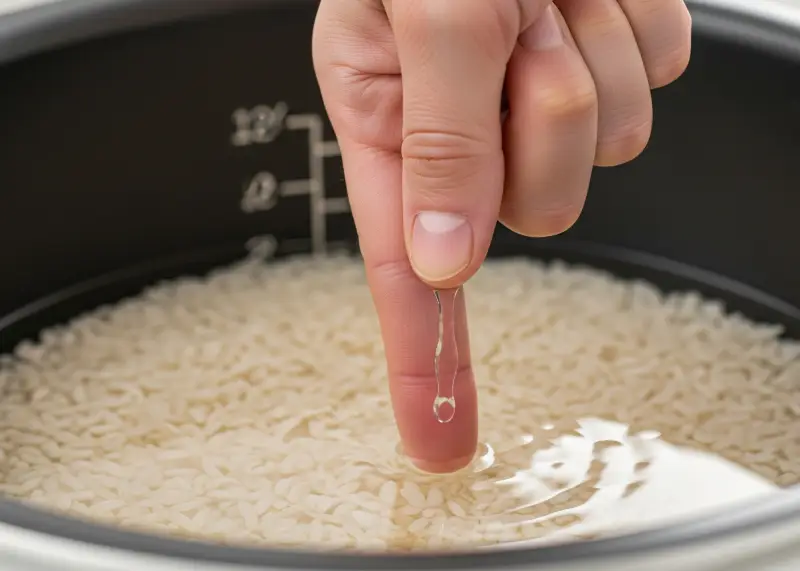
🥢 The Classic “Finger Method”
Ask any Filipino how they measure water for rice, and chances are they’ll show you the finger method. No measuring cups, no calculators – just the natural instinct of a Pinoy cook.
The process is simple:
- Wash the rice thoroughly until the water runs clearer.
- Level the rice in the pot.
- Place your finger so that it just touches the rice surface.
- Add water until it reaches the first line of your finger.
Why It Works
The finger method works because Filipino rice varieties like Dinorado or Sinandomeng often need the same rough ratio of water to rice. The finger gives a consistent measure regardless of the pot size. This hack has been passed down across generations, so even OFWs use it abroad when no measuring tools are around.
Of course, it’s not foolproof. Some rice types (like jasmine or brown rice) may require adjustments. Still, for the average Filipino household, this hack is a lifesaver – especially when cooking in bulk.
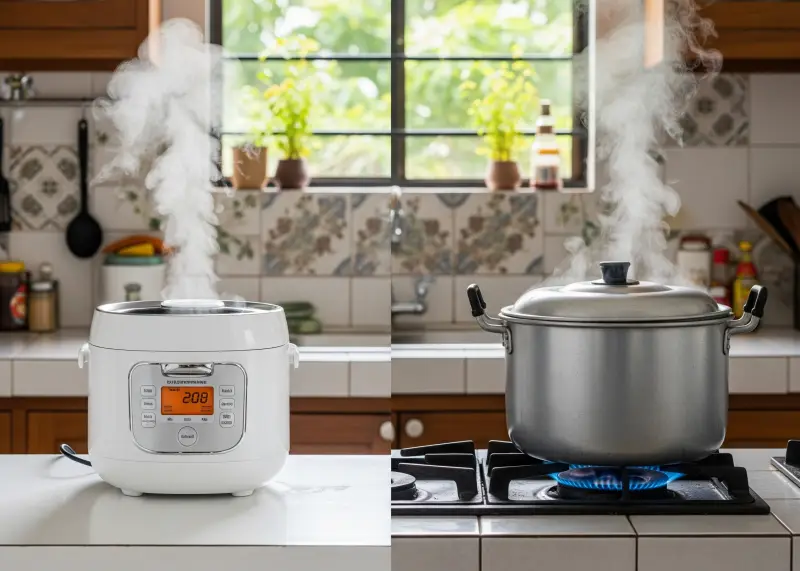
🔌 Rice Cooker vs. Kaldero
Filipino homes are split into two camps: those who swear by the rice cooker and those who still prefer the kaldero. Each has its strengths, and knowing the differences can help you decide which method works best for your family.
| Method | Pros | Cons |
|---|---|---|
| Rice Cooker | Convenient, automatic shut-off, consistent results, easy for kids/teens to use | Consumes electricity, some models make rice soggy if left on “warm” too long |
| Kaldero (Stovetop) | Flavorful “tutong” at the bottom, flexible for any rice type, no electricity needed | Requires more attention, higher risk of burning or undercooking |
In many provinces, the kaldero is still the default, often used over a wood-fired stove that adds a distinct smokiness to the rice. Meanwhile, in cities, the rice cooker dominates because of convenience. Some families even own both, using the rice cooker for daily meals and the kaldero when cooking large feasts.
🛠 Pinoy Hacks for Fluffy, Perfect Rice
To make rice that’s hindi buhaghag pero hindi rin malata, Filipinos have developed clever hacks:
✅ Wash properly – Rinse 2–3 times to remove excess starch. This prevents the rice from being too sticky.
✅ Let it rest – After cooking, keep the lid on for 10 minutes before serving. This evens out the texture.
✅ Add a pandan leaf – For aroma and flavor, some Pinoy homes drop a pandan leaf in the pot.
✅ Control the heat – For stovetop cooking, start on high heat until boiling, then simmer low until done.
✅ Stir once mid-way – Some prefer stirring halfway through cooking to ensure even doneness.
These hacks may sound small, but they make a big difference in everyday meals.
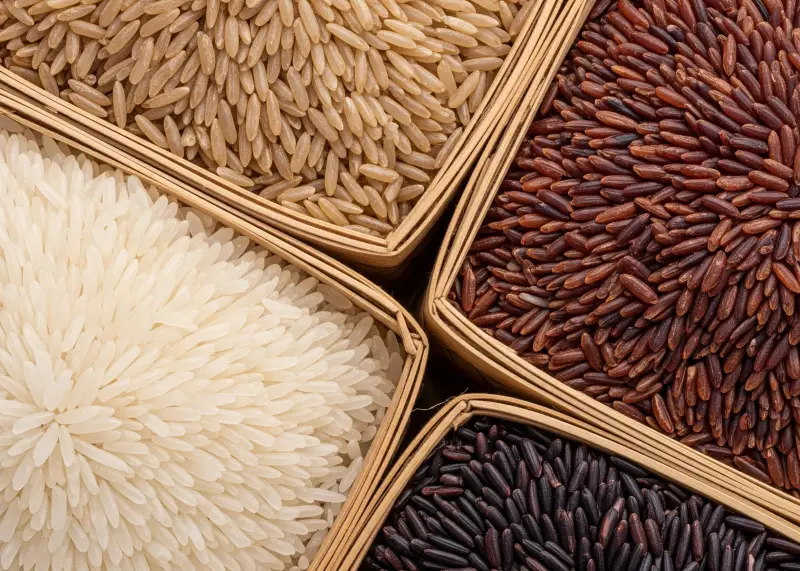
🌾 Exploring Rice Varieties
Not all rice is created equal. Knowing your rice helps you cook it better.
- Dinorado / Sinandomeng – Soft and fluffy, widely preferred for daily meals.
- Jasmine Rice – Fragrant, slightly sticky, pairs well with savory dishes.
- Brown Rice – Chewier, more filling, and healthier with more fiber.
- Glutinous Rice (Malagkit) – Used for kakanin, suman, and biko.
- NFA Rice – Budget-friendly, though often less consistent in quality.
Different varieties may require adjustments in water ratio. For instance, brown rice usually needs more water and a longer cooking time.
📏 Water Ratio Guide for Different Rice Varieties
Even though the classic finger method works for most Filipino households, it helps to know the general water-to-rice ratios – especially if you’re cooking unfamiliar varieties. This ensures consistent results whether you’re using a rice cooker or kaldero.
| Rice Variety | Water-to-Rice Ratio | Notes |
|---|---|---|
| White Rice (Sinandomeng, Dinorado) | 1 cup rice : 1.5 cups water | Standard ratio for everyday rice. Fluffy but not mushy. |
| Jasmine Rice | 1 cup rice : 1.25 cups water | Needs slightly less water due to natural stickiness. |
| Brown Rice | 1 cup rice : 2 cups water | Longer cooking time. Let rest for 10–15 mins after cooking. |
| Red Rice | 1 cup rice : 2 to 2.25 cups water | Similar to brown rice, chewier texture. |
| Glutinous Rice (Malagkit) | 1 cup rice : 1.5 cups water | For kakanin, suman, champorado. Add coconut milk for flavor. |
This table isn’t a strict rule, but it’s a great starting point. Over time, you’ll learn to adjust based on rice brand, pot type, and personal preference.
🥘 When Rice Goes Wrong
Every Filipino has had rice mishaps. Sometimes it’s undercooked, sometimes it’s watery. Don’t worry – here are fixes:
- Too watery? Keep cooking uncovered to evaporate excess water.
- Too hard? Sprinkle water and cook for a few more minutes on low heat.
- Burned bottom? Transfer the unburned portion to another container immediately.
One OFW in Dubai once shared how she burned rice while adjusting to her new gas stove. Instead of panicking, she scraped off the tutong, served it with tinapa, and her friends loved it. Proof that even mistakes can turn into delicious discoveries.
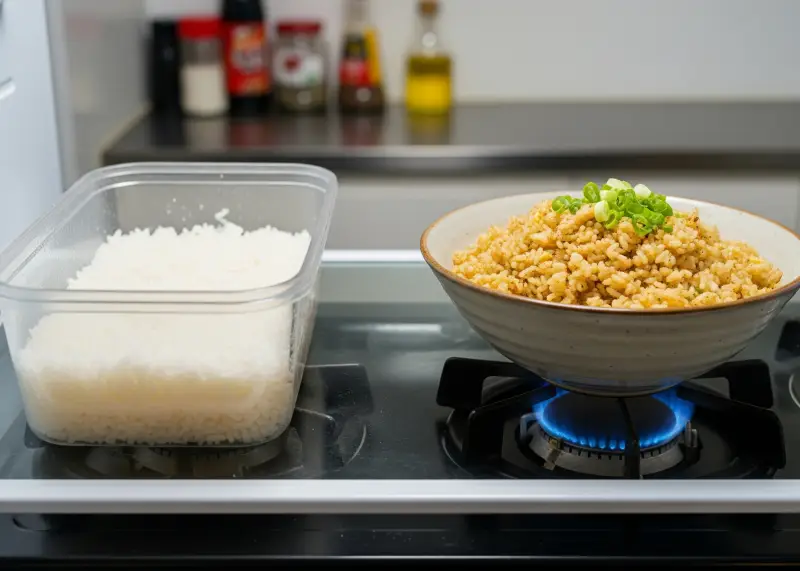
💡 Storage and Leftover Hacks
Filipinos rarely waste rice, and clever hacks help make the most of leftovers.
- Store cooked rice in airtight containers in the fridge.
- Reheat with a sprinkle of water to restore fluffiness.
- Turn cold rice into garlic fried rice (sinangag) for breakfast.
- Leftover rice can also be used for arroz caldo or champorado.
These hacks ensure no butil goes to waste – a reflection of Filipino thrift and respect for food.
Frequently Asked Questions about Cooking Rice Perfectly – Pinoy Hacks
- What is the “finger method” and why do so many Pinoys use it?
The finger method is where you level the rice in the pot, put your finger across the rice, then add water until it reaches the “first line” of your finger. It’s simple, no measuring cups needed – perfect when you don’t have fancy tools. For many Filipino households, it gives just enough water to get fluffy rice without being soggy. - Should I use a rice cooker or a kaldero (pot)? Which one’s better?
Both have perks. Rice cookers are super convenient, auto shut-off, less chance of burning, and good for daily meals. Kalderos add flavor (like that “tutong” crust) and let you cook with low heat or smoky heat (if using wood or charcoal), but need more attention. If you have the time, using a kaldero can make rice feel more traditional and special. - How can I get rice that’s fluffy, not mushy or sticky?
Rinse the rice 2-3 times until the water is pretty clear – this removes extra starch that causes stickiness. After it finishes cooking, let it rest (lid on) for about 10 minutes so steam evens out moisture. And don’t add too much water. - Do different kinds of rice need different amounts of water?
Yes! For example, white rice like Dinorado or Sinandomeng usually needs about 1 cup rice to 1.5 cups water. Brown or red rice need more water (around 2 cups) and more time to cook. Glutinous rice (“malagkit”) also behaves differently – often mixed or cooked with coconut milk or more water. So if you switch rice types, adjust the water amount. - What are some cute hacks to make my rice more fragrant or flavorful?
Drop in a pandan leaf while cooking, or add a slice of ginger for aroma. Some people even use coconut water instead of regular water for a subtle, sweet fragrance. Little touches like that make a big difference. - What do I do when the rice goes wrong – too watery, too hard, or burnt bottom?
If it’s too watery: cook it uncovered for a few more minutes to let moisture evaporate. If it’s too hard: sprinkle a bit of water and cook on low heat until it softens. Burnt bottom (tutong): carefully scoop out the unburnt part and separate it. Some people love a little crisp at the bottom – can be tasty if not bitter. - How do I store leftover rice so it stays safe and still good to eat later?
Store cooked rice in airtight containers and put in the fridge as soon as possible (within 2 hours is best). When you reheat, sprinkle a little water then heat gently – this helps restore moisture so it doesn’t feel dry or chewy. - Can leftover rice be reused in tasty ways?
Definitely. Cold leftover rice is great for sinangag (garlic fried rice), or you can turn it into champorado, arroz caldo, or even rice pudding. So instead of seeing leftovers as waste, think of them as ingredients for something new. - Why does my rice in the cooker sometimes turn mushy?
Usually because there’s too much water or the rice stays on the “warm” setting too long. Also maybe the cooker doesn’t release steam well, so moisture builds up. Measure better (finger method or actual measuring), fluff the rice right after it’s done, and don’t leave it on warm for too long. - Is there a “healthiest” kind of rice for Filipinos wanting more nutrition?
Brown rice and red rice are the top options. They have more fiber and nutrients since they keep more of their bran. They take a bit more time to cook and may need more water. But if you ease them into your meals, they’re great for health and still pair well with classic ulam.
🍴 The Bigger Picture: Why Perfect Rice Is More Than Cooking
Cooking rice isn’t just a kitchen skill – it’s a cultural bond. For Filipinos, perfect rice represents care, family tradition, and resourcefulness. Every hack, from the finger method to tutong appreciation, tells a story of resilience and adaptation. It shows how Filipinos make the most of what they have while turning meals into memories.
So the next time you measure water with your finger or savor leftover sinangag, remember: it’s not just about cooking rice perfectly. It’s about keeping alive the flavors of home, the lessons of our lolas, and the daily joy of sharing meals with loved ones.
🍚 References
-
Manila Spoon – How to Cook the Perfect Rice Every Time!
-
NutriAsia – How to Achieve The Perfect Fluffy Rice
-
AllRecipes – Learn the Filipino Trick for Measuring Water for Rice
-
Instagram – Expert Cooking Hacks for Perfect Filipino Rice
-
Jun Belen – The Ritual of Cooking Rice
-
TikTok – How to Cook Rice the Filipino Way



